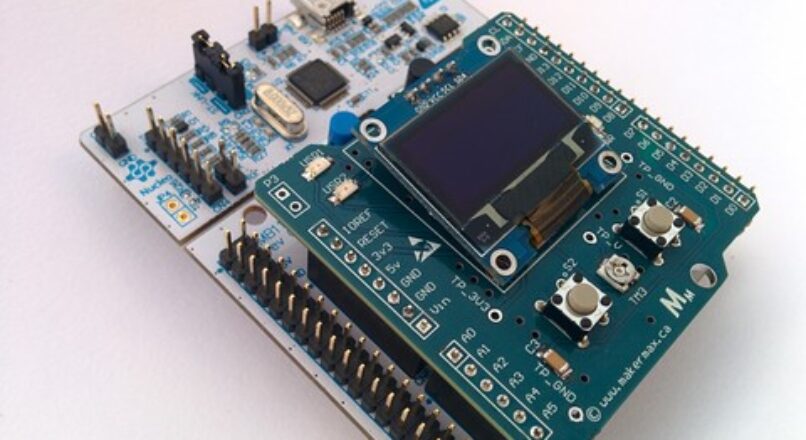
Praktische projecten met het I2C-protocol – Leren door te doen!

Prijs: $49.99
Welkom bij deze cursus over embedded systemen voor STM32: Masterclass I2C-protocol. Het I2C-communicatieprotocol is een populair protocol dat microcontrollers gebruiken om met verschillende apparaten te praten, zoals EEPROMS en NVRAM's, ADC's en DAC's, I/O-interfaces voor poortuitbreiding, en een hele reeks verschillende soorten sensoren. Deze les gaat dieper in op de theorie achter het I2C-protocol, waarom het oorspronkelijk is ontworpen, welke soorten gangbare formaten beschikbaar zijn, en hoe I2C-communicatie tussen een STM32-microcontroller kan worden geïmplementeerd, een LTC2990-stroom, spannings- en temperatuursensor en een OLED-display.
Hands-on ingebedde systemen met Atmel SAM4s ARM-processor?
Hands-on ingebedde systemen met Atmel SAM4s ARM-processor, Hands-on ingebedde systemen met Atmel SAM4s ARM-processor. Hands-on ingebedde systemen met Atmel SAM4s ARM-processor, Hands-on ingebedde systemen met Atmel SAM4s ARM-processor. Ik schrijf momenteel firmware voor veiligheidskritieke systemen die in elektrische auto's passen. Ik schrijf momenteel firmware voor veiligheidskritieke systemen die in elektrische auto's passen 10+ jaar, Ik schrijf momenteel firmware voor veiligheidskritieke systemen die in elektrische auto's passen, Ik schrijf momenteel firmware voor veiligheidskritieke systemen die in elektrische auto's passen.
Ik schrijf momenteel firmware voor veiligheidskritieke systemen die in elektrische auto's passen
De cursus is verdeeld in vier delen –
Sectie 1 – In dit gedeelte leert u de theorie achter het I2C-protocol en hoe u dit effectief kunt implementeren.
Sectie 2 – In deze sectie gaat u een gratis en open source ontwikkelomgeving opzetten voor het programmeren en debuggen van ARM Cortex-microcontrollers. Als je eerder mijn cursus over de basisprincipes van ARM Cortex-M-processors hebt gevolgd, dan kunt u ervoor kiezen om naar het volgende gedeelte te gaan.
Sectie 3 – In dit gedeelte krijgt u praktische ervaring met het schrijven van de I2C-stuurprogramma's voor de LTC2990-temperatuur, stroom- en spanningssensor en het SSD1306 OLED-display. U kunt de kennis die u in dit gedeelte heeft geleerd, toepassen op elk ander I2C-apparaat van uw keuze.
Sectie 4 – In deze sectie ontgrendel je functies van het I2C Shield met speciaal ontworpen opdrachten. Na elke opdracht laat ik je ter vergelijking mijn werkwijze zien.
Welke hardware is nodig voor deze cursus?
Deze cursus is gemaakt rond de Nucleo-serie borden die ST Microelectronics en ik hebben ontworpen, speciaal voor deze cursus een op maat gemaakt bord dat bovenop het Nucleo-bord past. Het Nucleo-bord kan rechtstreeks bij ST Micro worden gekocht en het aangepaste I2C-bord kan worden gekocht op www(punt)makermax(punt)ca zodat u aan de slag kunt zonder dat u een heel elektronicalab aan uw bureau hoeft te hebben. Hoewel deze hardware wordt aanbevolen, het is niet verplicht. Als u ervoor kiest de hardware niet te kopen, je kunt nog steeds alle lezingen volgen terwijl ik je mijn implementatie laat zien. Toch de beste manier om te leren, is om het zelf te proberen en te implementeren. Als u nog vragen heeft over de hardware of iets anders, stuur me een bericht! Ik help u graag verder.





Laat een antwoord achter
Je moet Log in of registreren om een nieuwe opmerking toe te voegen .